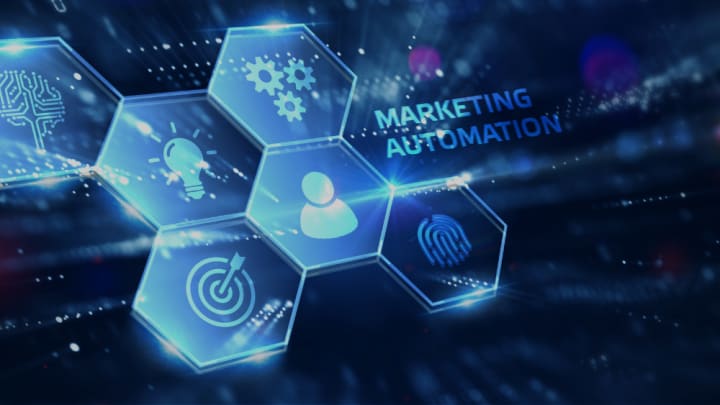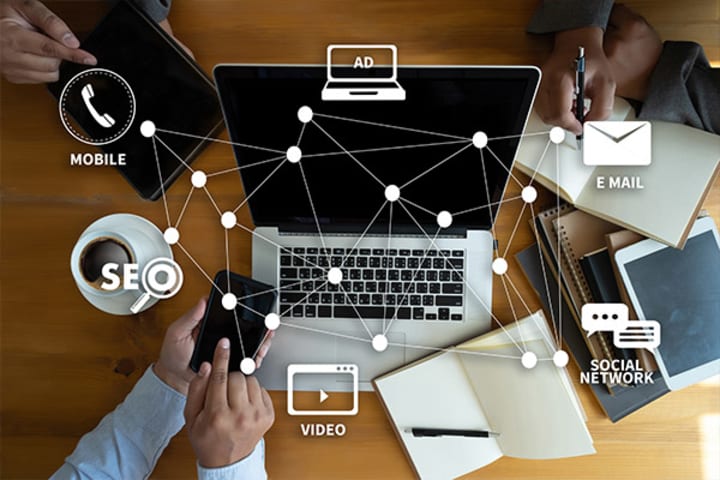Email Marketing Automation: Boost Your Conversion Rates
Do you want to know what is email marketing automation? Click to read everything here.

Email marketing is one of the most effective and cost-efficient ways for businesses to reach out to their customers and prospects. However, as businesses grow, managing email marketing manually can become challenging and time-consuming. That's where email marketing automation comes into play.
Table of Contents
- What is email marketing automation?
- How does email marketing automation work?
2.1. Step 1: identify your target audience
2.2. Step 2: set up an automation workflow
2.3. Step 3: create email templates
2.4. Step 4: test and optimize
3. Benefits of email marketing automation
4. Email marketing automation best practices
5. Examples of email marketing automaton
6. Final words
What is Email Marketing Automation?
Email marketing automation refers to the process of sending pre-written emails to customers and prospects based on specific triggers or actions. These triggers or actions can include a new subscriber signing up for a newsletter, a customer making a purchase, or a customer abandoning their shopping cart.

Email marketing automation allows businesses to send targeted messages to their audience at the right time, increasing engagement and improving conversion rates. By automating email marketing, businesses can save time, improve efficiency, and increase revenue.
How Does Email Marketing Automation Work?
Email marketing automation works by setting up workflows that trigger emails based on specific actions or events. These workflows can be as simple or complex as needed, depending on the business's needs.
Here are the steps involved in setting up an email marketing automation campaign:
Step 1: Identify Your Target Audience
The first step in any email marketing campaign is to identify your target audience. This includes understanding their needs, preferences, and behaviors.
By segmenting your audience, you can create targeted campaigns that resonate with your audience, increasing engagement and conversion rates.
Step 2: Set Up Automation Workflows
Once you've identified your target audience, the next step is to set up automation workflows that will trigger emails based on specific actions or events.
For example, when a new subscriber signs up for a newsletter, they may receive a welcome email that introduces them to the brand and offers them relevant content and products.
Or, when a customer makes a purchase, they may receive an email thanking them for their purchase and offering them a discount on their next purchase.
Step 3: Create Email Templates
The next step is to create email templates that will be used in your automation workflows. These templates should be designed to match your brand's voice and messaging and should be optimized for the best possible open and click-through rates.
It's essential to test different email templates to determine what resonates best with your audience.
Step 4: Test and Optimize
Once your workflows and templates are set up, it's essential to test and optimize them for the best results. This includes testing different subject lines, calls-to-action, and email copy to determine what resonates best with your audience.

You can also use A/B testing to compare the performance of different emails and workflows.
Benefits of Email Marketing Automation
Email marketing automation offers several benefits for businesses, including:
- Saves Time and Resources: By automating email marketing campaigns, businesses can save time and resources, allowing them to focus on other aspects of their business.
- Increases Efficiency: Email marketing automation allows businesses to send targeted messages to their audience at the right time, increasing efficiency and improving conversion rates.
- Improves Engagement: By sending targeted and relevant messages to your audience, email marketing automation can improve engagement and keep your audience interested in your brand.
- Boosts Revenue: By improving engagement and conversion rates, email marketing automation can boost revenue for your business.
Email Marketing Automation Best Practices
To get the most out of your email marketing automation campaigns, here are some best practices to follow:

- Segment Your Audience: Segmenting your audience allows you to create targeted campaigns that resonate with your audience, increasing engagement and conversion rates.
- Personalize Your Emails: Personalizing your emails with the recipient's name and other relevant information can improve engagement and make your audience feel valued.
- Timing: Timing is crucial in email marketing. Ensure that you're sending emails at the right time when your audience is most likely to engage with them. Conduct A/B testing to determine the best time to send emails.
- Test and Optimize: Testing and optimizing your email marketing automation campaigns is essential to improve their effectiveness. Continuously monitor your campaigns and make adjustments as needed.
- Keep it Simple: Avoid overwhelming your audience with too many emails. Keep your campaigns simple and concise, with a clear call-to-action.
- Monitor Your Metrics: Monitor key metrics such as open rates, click-through rates, and conversion rates to gauge the effectiveness of your campaigns.
Examples of Email Marketing Automation
Let's take a look at some examples of email marketing automation campaigns that have proven to be effective:
- Welcome Emails: When a new subscriber signs up for a newsletter or makes a purchase, they receive a welcome email that introduces them to the brand and offers them relevant content or products.
- Abandoned Cart Emails: When a customer abandons their shopping cart, they receive an email reminding them of their cart's contents and offering them a discount or other incentive to complete the purchase.
- Re-Engagement Emails: When a subscriber has been inactive for a certain period, they receive a re-engagement email, encouraging them to interact with the brand again.
- Birthday Emails: Sending birthday emails to subscribers can be a great way to make them feel valued and increase engagement.
Final Words
Email marketing automation is an effective strategy for businesses of all sizes. By automating email campaigns, businesses can save time, increase efficiency, and improve engagement and conversion rates.
Follow the best practices outlined in this article and use examples of effective email marketing automation campaigns to create targeted campaigns that resonate with your audience and boost revenue.
About the Creator
Raymond McNatt
I've spent over 10 years honing my ability to captivate readers with my words. My specialization in email marketing and digital marketing niches has led to the publication of numerous articles, and essays, in various publications.






Comments
There are no comments for this story
Be the first to respond and start the conversation.